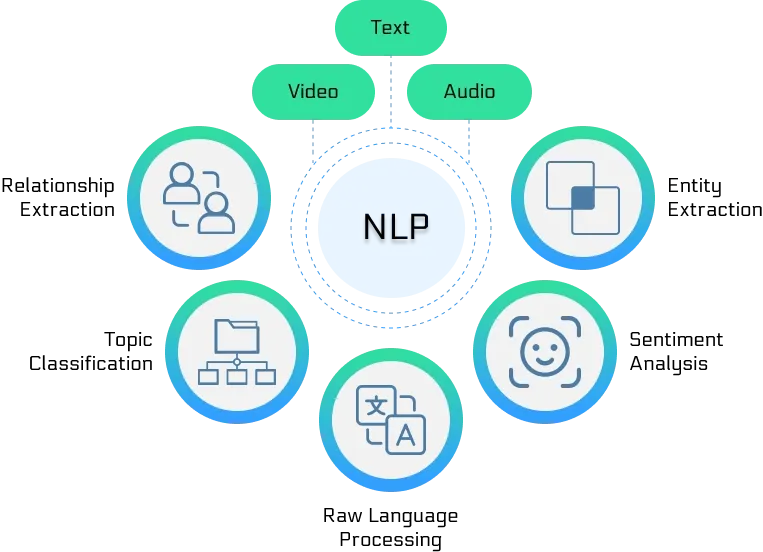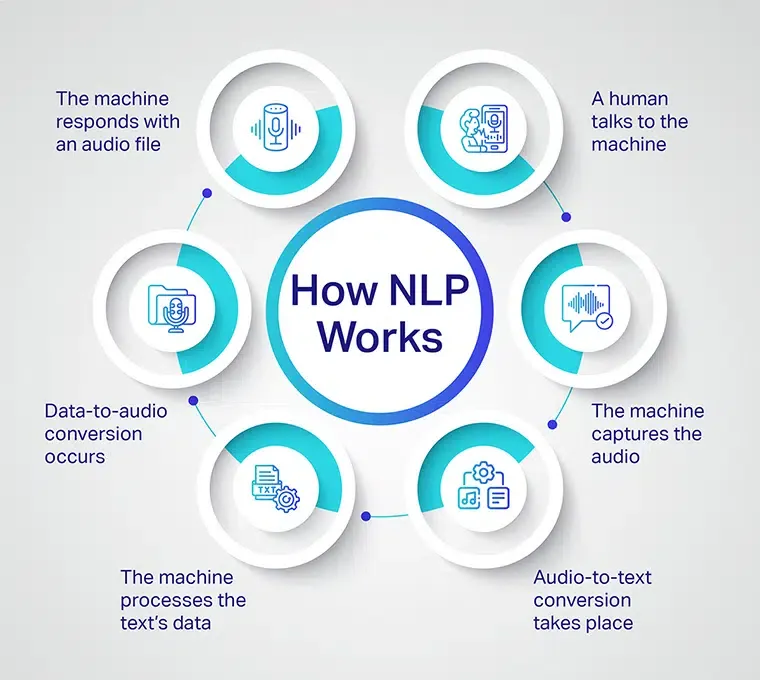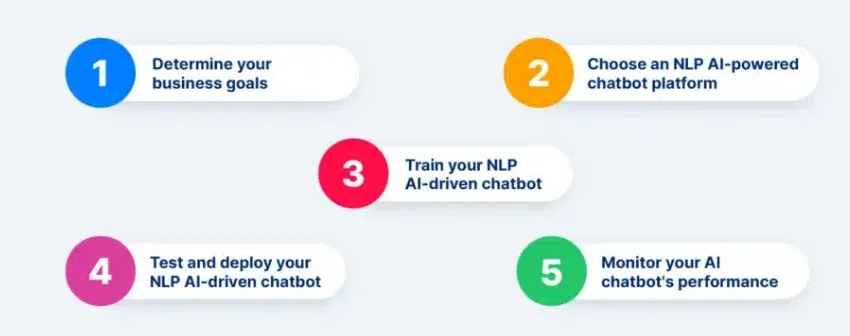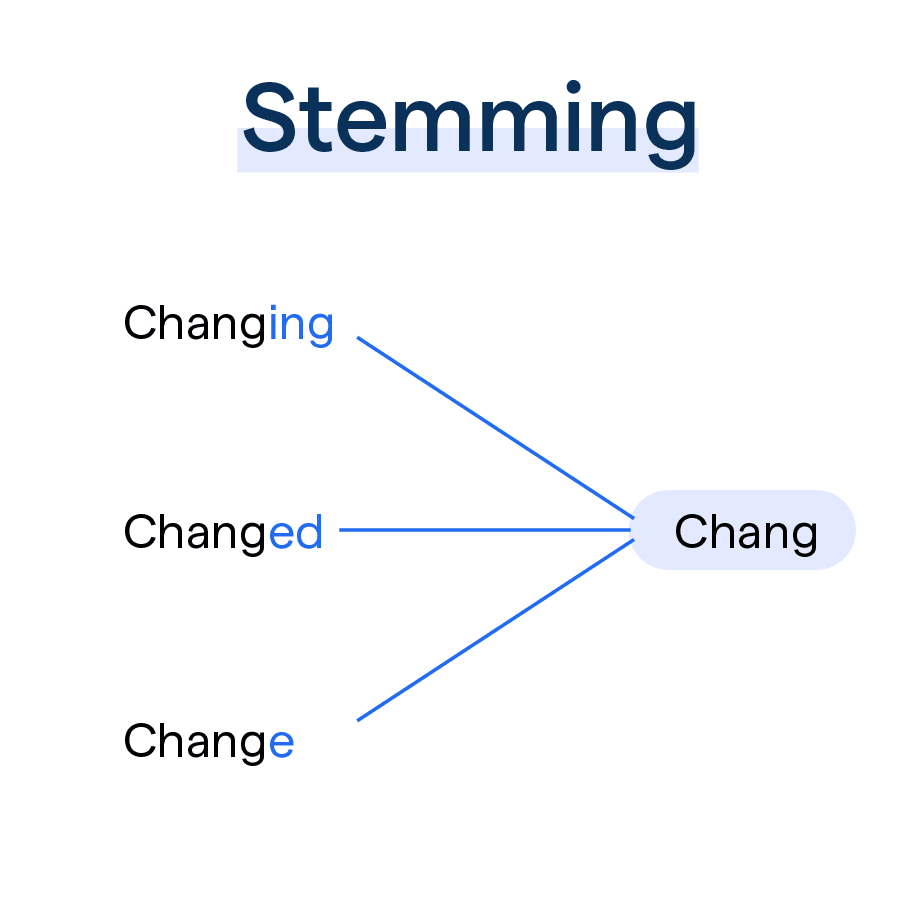Introduction
Even though the science of natural language processing is not new, the technology is developing quickly. It is due to the growing interest in human-to-machine communication and the availability of massive data, robust computation, and an improved algorithm.
We can communicate in any language like English, Spanish, or Chinese. However, most individuals cannot understand machine code, also referred to as machine language, a computer's native language. At the most basic level of your gadget, communication occurs through millions of zeros and ones that result in logical actions rather than words.
Many decades ago, programmers interacted with the earliest computers using punch cards. A small number of individuals understood this laborious and tedious method. Now, you can tell a device playing music, "Alexa, I like this song." A music player in your house will turn down the volume and say, "OK., Rating saved," the voice said. The algorithm is then modified to play that song—and others like it—the following time you tune in to that music station.
Let's examine that interaction in more detail. NLP readily engaged your device within about five seconds of hearing you speak. It then grasped the comment's implicit intent, carried out the activity, and gave feedback in a complete English sentence. NLP and other AI components like machine learning and deep learning enabled the entire interaction.
Spreadsheets and database tables are two examples of structured data that computers excel at handling. But people often speak to one another using words, not tables. Computers are unfortunate by this. Unstructured text in English or another human language makes up much of the world's information. How can a computer make unstructured language understandable so it can extract data?
There has never been a better time to comprehend how such technology works in effectively learning human speech. According to a survey by Reports and Data, the global Natural Language Processing (NLP) industry will go up to USD 44.96 Billion by 2028.
As businesses have more access to and control over their unstructured data streams, the financial and operational advantages of implementing NLP technology are becoming more evident. Early adopters are placing their companies as industry leaders, and trading insights are essential for gaining a competitive edge.
What is NLP?
As described, NLP is a technology that aids in understanding human language by computers. Making sense of unstructured data, such as audio files or electronic conversations, is the primary goal of the technology, which is a subset of artificial intelligence (AI). By breaking the language down into words, gaining context from the relationships between phrases, and organizing this data to create insights you can apply to a business, meaning is extracted.

It is at the nexus of computational linguistics, artificial intelligence, and computer science. NLP is a clever and practical method for computers to comprehend, evaluate, and extrapolate meaning from human language. Described, natural language processing, or NLP, is the area of artificial intelligence that focuses on making it possible for computers to comprehend and analyze human languages. Let's look at how NLP functions to learn the unstructured text and extract facts from it.
Programmers have been attempting to create software that can understand languages like English since the invention of computers. Since humans have been recording information in writing for thousands of years, it makes sense that a computer would too. It would be beneficial if it could read and comprehend all that information.
Although they still don't fully comprehend English as humans do, computers are already very capable. What you can do with NLP already appears magical in some niche contexts. By using NLP approaches on your projects, you might be able to save a significant amount of time.
Even better, open-source Python modules like neural core, textacy, and spaCy simplify accessing the most recent NLP innovations.
Why is NLP so important?
Natural language processing can evaluate vast amounts of text data, including social media comments, customer service issues, online reviews, news articles, and more. Scaling other language-related tasks, natural language processing enables computers to converse with people in their language. For instance, NLP enables computers to read text, hear a voice, analyze it, gauge sentiment, and identify the key points.
More language-based data may now be handled by machines than humans, without tiring and in a reliable, unbiased manner. Automation will be essential to effectively evaluate text and audio data given the tremendous volume of daily unstructured data, from social media to medical records.
This business data has a wealth of insightful information, and NLP can help organizations quickly identify those insights. It accomplishes this by enabling robots to understand human language more quickly, precisely, and consistently than human agents.
For results to be correct and devoid of inconsistencies, NLP tools process data in real-time, around-the-clock, and to the exact specification for all of your data.

What makes NLP tricky?
Natural language processing has some difficulties, but its advantages to businesses make it well worth the investment.
However, before using NLP, it's crucial to understand those difficulties.
Human language is diverse, ambiguous, convoluted, and complex. More than 6,500 languages are spoken globally, each with unique syntactic and semantic conventions.
Even people have trouble understanding words.
Therefore, you must first translate natural language into an interpretable form before computers can grasp it.
Data scientists must instruct NLP technologies to grasp the context, word ambiguities, and other intricate language-related ideas in addition to word meanings and word order.
How does NLP work?
There is no one static NLP technique. We must employ various strategies and combine them to add more layers of information while managing language. It is utterly necessary to comprehend some of the language processing principles while getting started with NLP.
It should occur as a no-brainer that NLP employs linguistics-derived methods. In general, language processing involves four steps:
Morphology tells us the structure and relationship of words.
The syntax is the order in which words are used to form sentences.
Semantics studies how lexical and grammatical structures disclose the meaning of words.
Pragmatics is simply contextual word meaning.
Most of the time, we must first change the language we want to process into a format that a computer can understand. Syntactic and semantic analysis is used to fulfill the goal of NLP by cleaning up a dataset and making it simpler to interpret.

NLP-powered chatbots!
Virtual agents that are NLP chatbots and part of the current generation of chatbots continually learn new things. Throughout the dialogue, they maintain notes and pick up further information. Some of the most crucial components of an NLP-powered chatbot include the following:
Dialogue management: This keeps tabs on the conversation's progress. The two main elements of dialogue management in AI chatbots are context (storing and exchanging conversational data) and session (one conversation from beginning to end).
Human Handoff: This term describes the smooth transfer of control from an AI chatbot to a human agent.
Integration of Business Logic: Your chatbot must be programmed with the specific firm logic of your business.
Rapid Iteration: Your bot should be user-friendly and straightforward to program. The quickest way to the ideal solution is through rapid iteration.
Training and Iteration: To prevent your NLP-powered chatbot from going haywire, it's important to consistently train it and provide feedback. To increase its comprehension of client intents using real-world conversation data created across channels.
Natural Language Processing (NLP): The utterances, intent behind the entity, context, and session are the main building blocks of your chatbot's NLP.
Simplicity: To make the most of your chatbot, you'll want to set it up as simply as possible, with only the required features. Of course, you can always upgrade or add new features as necessary in the future.

Parts of Speech Tagging
Every word mentioned in the body text is classified as a noun, adjective, pronoun, etc., by NLP using morphology, which defines the functions of individual words. The fact that words can serve various purposes depending on the context in which they are used makes this labeling challenging. For instance, words like "bark" might refer to both a barking dog and a tree, which makes classification challenging.
Bag of Words
Bag of Words is a term used in NLP to describe the use of a model that generates a matrix of all the times in a given text extract. It is essentially a frequency table of each word in the text body.
Once complete, you can use training classifiers based on the frequency matrix. This method does, however, disallow contextual and semantic meaning.
Stop Word Removal
Typical articles like "a the, to, etc." are removed since they serve as filler and don't add much to the text's meaning. Stop word removal makes NLP easier by eliminating common words that offer little or no information to the reader.
Lemmatization
Another helpful method is lemmatization, which unites words with various spellings of the same term after reducing them to their root form.
It effectively transforms verbs from the past into the present (e.g., "thought" becomes "think") and unifies synonyms ("huge" changed to "big"). To distinguish between similar words, this standardizing procedure takes context into account.
Suggested Reading:
NLP vs NLU vs NLG: Differences and Applications
Stemming
Like lemmatization, stemming mainly cuts the beginning or end of words to remove affixes. Prefixes and affixes can produce intentional or derivational affixes, which is the big issue with stemming.
Even though stemming has several downsides, it is nonetheless quite helpful for fixing spelling mistakes after tokenization. Stemming algorithms are relatively quick and easy to use, which makes them practical for NLP.

Tokenization
Simply put, it is successfully segmenting each word, phrase, or clause into tokens to break down an enormous body of text into smaller ordered semantic units.
We can also remove punctuation thanks to tokenization, making segmentation more straightforward. But in some scholarly works, parentheses, hyphens, and other punctuation are required since they are crucial to morphology. Of course, not all languages behave in the same way.
Semantics
We need to be able to decipher a text's true meaning to perform NLP activities. The intended purpose of a text is referred to as semantics. It still takes a lot of study from linguists and computer scientists to understand this part of the subject.
NLP + Your Business
- Customer Support and Feedback: Unlike sentiment analysis, You may use NLP to analyze data from surveys, product reviews, and social media to learn more about your product. Chatbots can utilize NLP to automatically tag customer support tickets to the appropriate department and handle more straightforward questions.
- NLP can assist with social media analysis by processing sentiment and subject classification according to your unique brand health and community-building criteria.
- Inbox filters: route emails to the appropriate department, specify what urgent emails look like for your company, or detect spam
- Conduct employee or customer satisfaction surveys with survey analytics, and discover patterns instantly.
Is NLP as good as it seems?
First of all, training NLP models take a long time. It can take some models many weeks to display trustworthy findings. As a result, if you have short deadlines, you should reconsider using an NLP solution, primarily if you built it yourself.
More crucially, like with any Machine Learning algorithm, the output quality depends on the training data quality. Without a specific process, obtaining 100% accuracy using NLP is impossible. A significant amount of computational power is also needed for NLP technology, and artificial neural networks are still far from as adequate as the human brain.
Final words
Frequently, people rush to put an NLP solution into action without fully comprehending its potential or restrictions. Just to be precise.
It is excessive and unneeded to employ NLP for straightforward use cases.
Natural language processing chatbots can be a complete buzzkill and harm rather than help your organization if implemented improperly. Making the user type everything in is not making the process easier if they can complete it with a few clicks.
On the other hand, NLP chatbots can be helpful if the alternative entails giving the user an excessive amount of options at once. Simply asking your clients to type or speak their requests might help them avoid confusion and irritation.
For this purpose, it is crucial to prepare an implementation after researching NLP tools and accessible data.

